Connect With Us
Blog
Items filtered by date: April 2024
Causes of Ankle Sprains
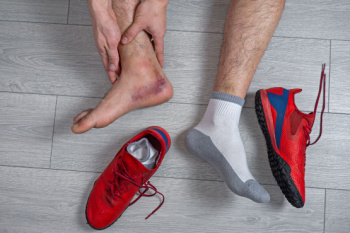
An ankle sprain is caused by damage to the ligaments surrounding the ankle joint, typically resulting from sudden twisting or rolling movements. Ligaments are strong bands of tissue that connect bones and provide stability to joints. When excessive force is applied to the ankle beyond its normal range of motion, the ligaments can stretch or tear, leading to a sprain. This injury often occurs during activities such as running, jumping, or walking on uneven surfaces. Factors contributing to ankle sprains include inadequate warm-up or stretching before physical activity, inappropriate footwear for the activity, and previous ankle injuries that weaken the ligaments. Additionally, individuals with poor balance, weak muscles, or underlying foot or ankle conditions may be more susceptible to sprains. Recognizing the signs of an ankle sprain, such as pain, swelling, bruising, and difficulty bearing weight, is essential for a prompt recovery. If you have endured an ankle sprain, it is suggested that you visit a podiatrist who can accurately diagnose and treat this injury.
Ankle sprains are common but need immediate attention. If you need your feet checked, contact Stephanie Oexeman, DPM from Oexeman Foot and Ankle, PLLC. our doctor can provide the care you need to keep you pain-free and on your feet.
How Does an Ankle Sprain Occur?
Ankle sprains take place when the ligaments in your ankle are torn or stretched beyond their limits. There are multiple ways that the ankle can become injured, including twisting or rolling over onto your ankle, putting undue stress on it, or causing trauma to the ankle itself.
What Are the Symptoms?
- Mild to moderate bruising
- Limited mobility
- Swelling
- Discoloration of the skin (depending on severity)
Preventing a Sprain
- Wearing appropriate shoes for the occasion
- Stretching before exercises and sports
- Knowing your limits
Treatment of a Sprain
Treatment of a sprain depends on the severity. Many times, people are told to rest and remain off their feet completely, while others are given an air cast. If the sprain is very severe, surgery may be required.
If you have suffered an ankle sprain previously, you may want to consider additional support such as a brace and regular exercises to strengthen the ankle.
If you have any questions please feel free to contact our office located in Chicago, IL . We offer the newest diagnostic and treatment technologies for all your foot and ankle needs.
Are There Differences Between Children’s and Adults' Feet?
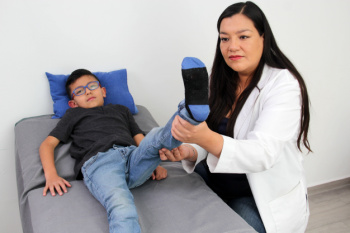
Adults' and children's feet may appear similar at first glance, but they exhibit distinct characteristics and undergo unique developmental changes. Children's feet are more pliable, with softer cartilage and bones that are still growing and forming. As a result, their feet are more susceptible to deformities and structural abnormalities, such as flat feet or toe-walking. Additionally, children often have a higher arch and wider forefoot compared to adults. Over time, as children mature into adults, their feet undergo significant changes. The arches typically become more defined, and the foot structure stabilizes. Adults may also experience changes in foot size and shape due to factors like weight gain, pregnancy, or aging. Furthermore, adults are more prone to conditions like bunions, arthritis, and plantar fasciitis, which can affect foot function and mobility. Understanding these differences is essential for providing appropriate footwear, monitoring development, and addressing any potential issues early on to ensure optimal foot health throughout life. It is suggested that you schedule routine visits for your child with a podiatrist who can closely monitor the growth rate in their feet.
Making sure that your children maintain good foot health is very important as they grow. If you have any questions, contact Stephanie Oexeman, DPM of Oexeman Foot and Ankle, PLLC. our doctor can provide the care you need to keep you pain-free and on your feet.
Keeping Children's Feet Healthy
Having healthy feet during childhood can help prevent medical problems later in life, namely in the back and legs. As children grow, their feet require different types of care. Here are some things to consider...
Although babies do not walk yet, it is still very important to take care of their feet.
Avoid putting tight shoes or socks on his or her feet.
Allow the baby to stretch and kick his or her feet to feel comfortable.
As a toddler, kids are now on the move and begin to develop differently. At this age, toddlers are getting a feel for walking, so don’t be alarmed if your toddler is unsteady or ‘walks funny’.
As your child gets older, it is important to teach them how to take care of their feet.
Show them proper hygiene to prevent infections such as fungus.
Be watchful for any pain or injury.
Have all injuries checked by a doctor as soon as possible.
Comfortable, protective shoes should always be worn, especially at play.
If you have any questions please feel free to contact our office located in Chicago, IL . We offer the newest diagnostic and treatment technologies for all your foot and ankle needs.
Definition and Common Causes of Foot Pain
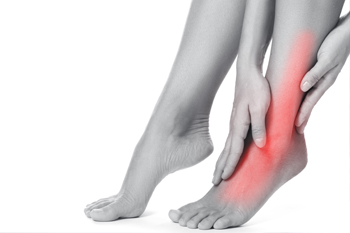
Foot pain, a pervasive issue affecting individuals of all ages, warrants a comprehensive understanding to address its diverse origins and alleviate discomfort. Defined as discomfort or soreness experienced anywhere in the foot, foot pain can stem from a multitude of factors. Common causes include biomechanical issues such as flat feet, high arches, or abnormal gait patterns, which place undue stress on the feet. Additionally, injuries like sprains, strains, or fractures, whether from sports activities or accidents, contribute to foot pain. Footwear choices play a significant role, with ill-fitting shoes, high heels, or worn-out footwear exacerbating discomfort. Furthermore, medical conditions such as arthritis, plantar fasciitis, neuropathy, and tendonitis can manifest as persistent foot pain. Lifestyle factors like obesity, poor posture, and occupational demands also impact foot health. If you are experiencing any type of foot pain, it is strongly suggested that you seek the guidance of a podiatrist who can accurately diagnose and offer a treatment plan that is right for you.
Foot Pain
Foot pain can be extremely painful and debilitating. If you have a foot pain, consult with Stephanie Oexeman, DPM from Oexeman Foot and Ankle, PLLC. our doctor will assess your condition and provide you with quality foot and ankle treatment.
Causes
Foot pain is a very broad condition that could be caused by one or more ailments. The most common include:
- Bunions
- Hammertoes
- Plantar Fasciitis
- Bone Spurs
- Corns
- Tarsal Tunnel Syndrome
- Ingrown Toenails
- Arthritis (such as Gout, Rheumatoid, and Osteoarthritis)
- Flat Feet
- Injury (from stress fractures, broken toe, foot, ankle, Achilles tendon ruptures, and sprains)
- And more
Diagnosis
To figure out the cause of foot pain, podiatrists utilize several different methods. This can range from simple visual inspections and sensation tests to X-rays and MRI scans. Prior medical history, family medical history, and any recent physical traumatic events will all be taken into consideration for a proper diagnosis.
Treatment
Treatment depends upon the cause of the foot pain. Whether it is resting, staying off the foot, or having surgery; podiatrists have a number of treatment options available for foot pain.
If you have any questions, please feel free to contact our office located in Chicago, IL . We offer the newest diagnostic and treatment technologies for all your foot care needs.
Heel Pain in the Morning?
Effective Fall Prevention Methods for Seniors
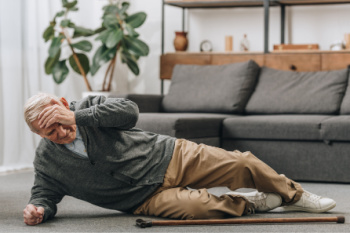
Ensuring a safe and secure environment is essential for seniors to maintain independence and well-being, especially concerning fall prevention within the home. Start by decluttering living spaces, and removing obstacles such as loose rugs, electrical cords, and furniture that may pose tripping hazards. Install handrails and grab bars in bathrooms and stairways to provide support and stability. Improve lighting throughout the home to enhance visibility and reduce the risk of missteps, particularly in dimly lit areas. Secure loose carpets and mats with non-slip backing to prevent slips and falls. Consider installing ramps or stairlifts for easier navigation between levels. Additionally, keep commonly used items within reach to minimize the need for excessive reaching or bending. Regularly assess the home environment for potential hazards and make necessary modifications to promote safety and peace of mind for seniors. The feet can be affected by falling, causing difficulty in completing daily tasks. If you have endured a foot injury from falling, it is suggested that you speak with a podiatrist who can offer you tailored treatment options and effective prevention methods.
Preventing falls among the elderly is very important. If you are older and have fallen or fear that you are prone to falling, consult with Stephanie Oexeman, DPM from Oexeman Foot and Ankle, PLLC. our doctor will assess your condition and provide you with quality advice and care.
Every 11 seconds, an elderly American is being treated in an emergency room for a fall related injury. Falls are the leading cause of head and hip injuries for those 65 and older. Due to decreases in strength, balance, senses, and lack of awareness, elderly persons are very susceptible to falling. Thankfully, there are a number of things older persons can do to prevent falls.
How to Prevent Falls
Some effective methods that older persons can do to prevent falls include:
- Enrolling in strength and balance exercise program to increase balance and strength
- Periodically having your sight and hearing checked
- Discuss any medications you have with a doctor to see if it increases the risk of falling
- Clearing the house of falling hazards and installing devices like grab bars and railings
- Utilizing a walker or cane
- Wearing shoes that provide good support and cushioning
- Talking to family members about falling and increasing awareness
Falling can be a traumatic and embarrassing experience for elderly persons; this can make them less willing to leave the house, and less willing to talk to someone about their fears of falling. Doing such things, however, will increase the likelihood of tripping or losing one’s balance. Knowing the causes of falling and how to prevent them is the best way to mitigate the risk of serious injury.
If you have any questions, please feel free to contact our office located in Chicago, IL . We offer the newest diagnostic and treatment technologies for all your foot care needs.
Foot Structure Changes During Pregnancy
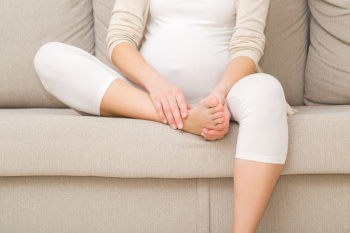
Pregnancy is a transformative journey, not just for the body but also for the feet. As the body accommodates the growing fetus, various physiological changes occur, extending to the feet. One notable alteration is the flattening of the arches due to the hormone relaxin, which loosens ligaments to prepare for childbirth. This can lead to overpronation, causing discomfort and increasing the risk of conditions like plantar fasciitis. Additionally, the increased weight and fluid retention during pregnancy can result in swelling and edema in the feet and ankles, further altering their structure and contributing to discomfort. Changes in gait and posture to accommodate the shifting center of gravity can place additional strain on the feet. While these changes are temporary, the importance of maintaining proper foot care during pregnancy is vital to feel well. If you have developed foot conditions during your pregnancy, it is suggested that you consult a podiatrist who can offer you effective relief tips.
Pregnant women with swollen feet can be treated with a variety of different methods that are readily available. For more information about other cures for swollen feet during pregnancy, consult with Stephanie Oexeman, DPM from Oexeman Foot and Ankle, PLLC. our doctor will attend to all of your foot and ankle needs.
What Foot Problems Can Arise During Pregnancy?
One problem that can occur is overpronation, which occurs when the arch of the foot flattens and tends to roll inward. This can cause pain and discomfort in your heels while you’re walking or even just standing up, trying to support your baby.
Another problem is edema, or swelling in the extremities. This often affects the feet during pregnancy but tends to occur in the later stages.
How Can I Keep My Feet Healthy During Pregnancy?
- Wearing orthotics can provide extra support for the feet and help distribute weight evenly
- Minimize the amount of time spent walking barefoot
- Wear shoes with good arch support
- Wear shoes that allow for good circulation to the feet
- Elevate feet if you experience swelling
- Massage your feet
- Get regular, light exercise, such as walking, to promote blood circulation to the feet
If you have any questions, please feel free to contact our office located in Chicago, IL . We offer the newest diagnostic and treatment technologies for all your foot care needs.


